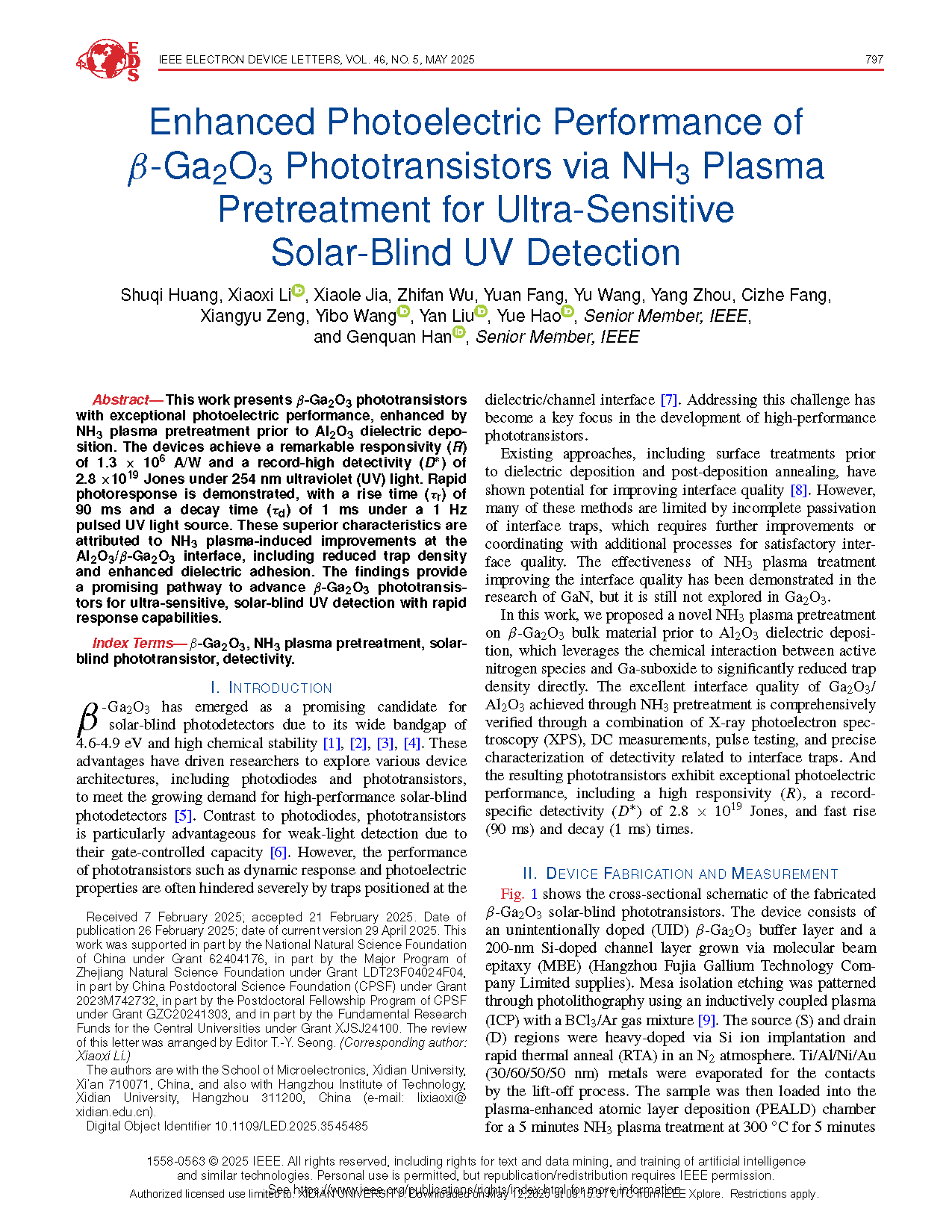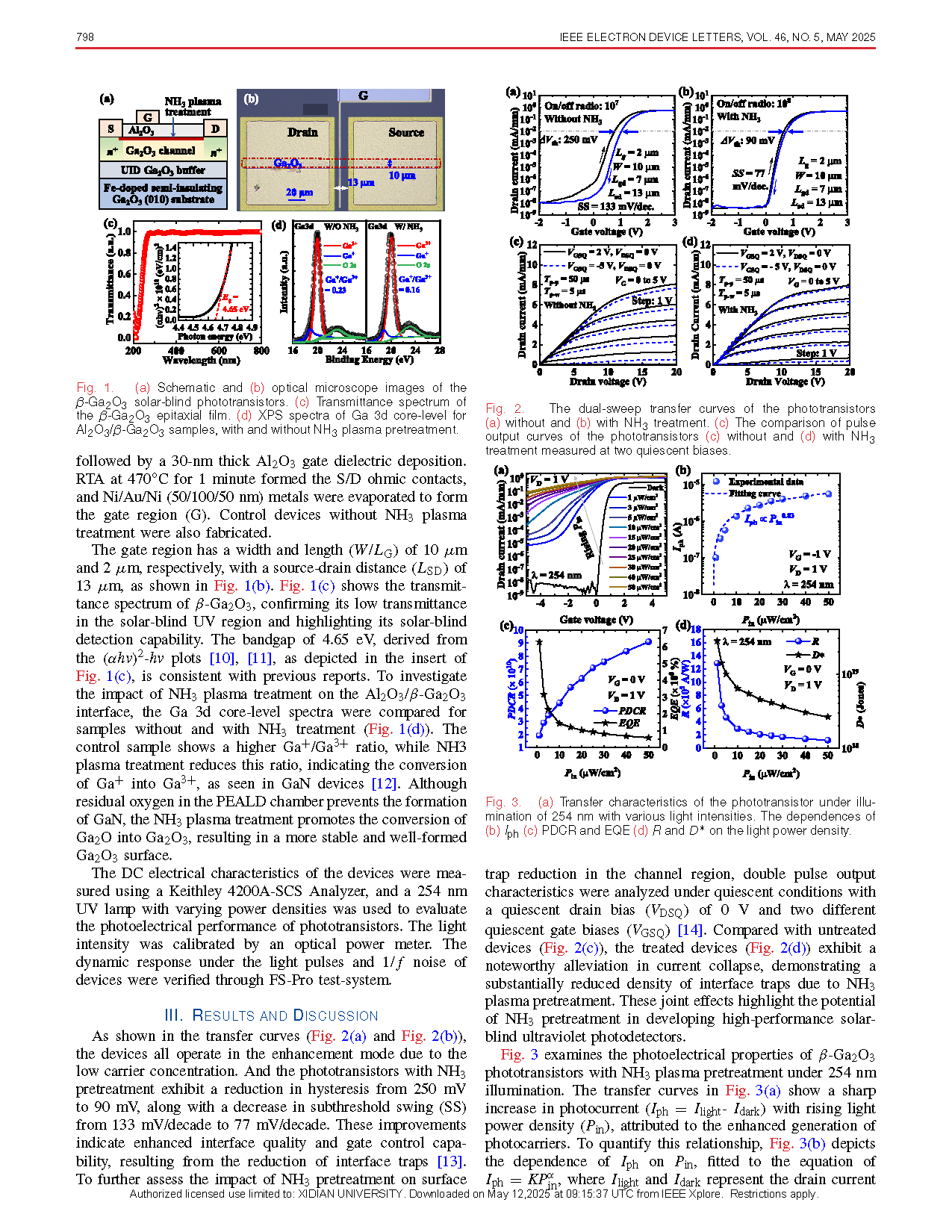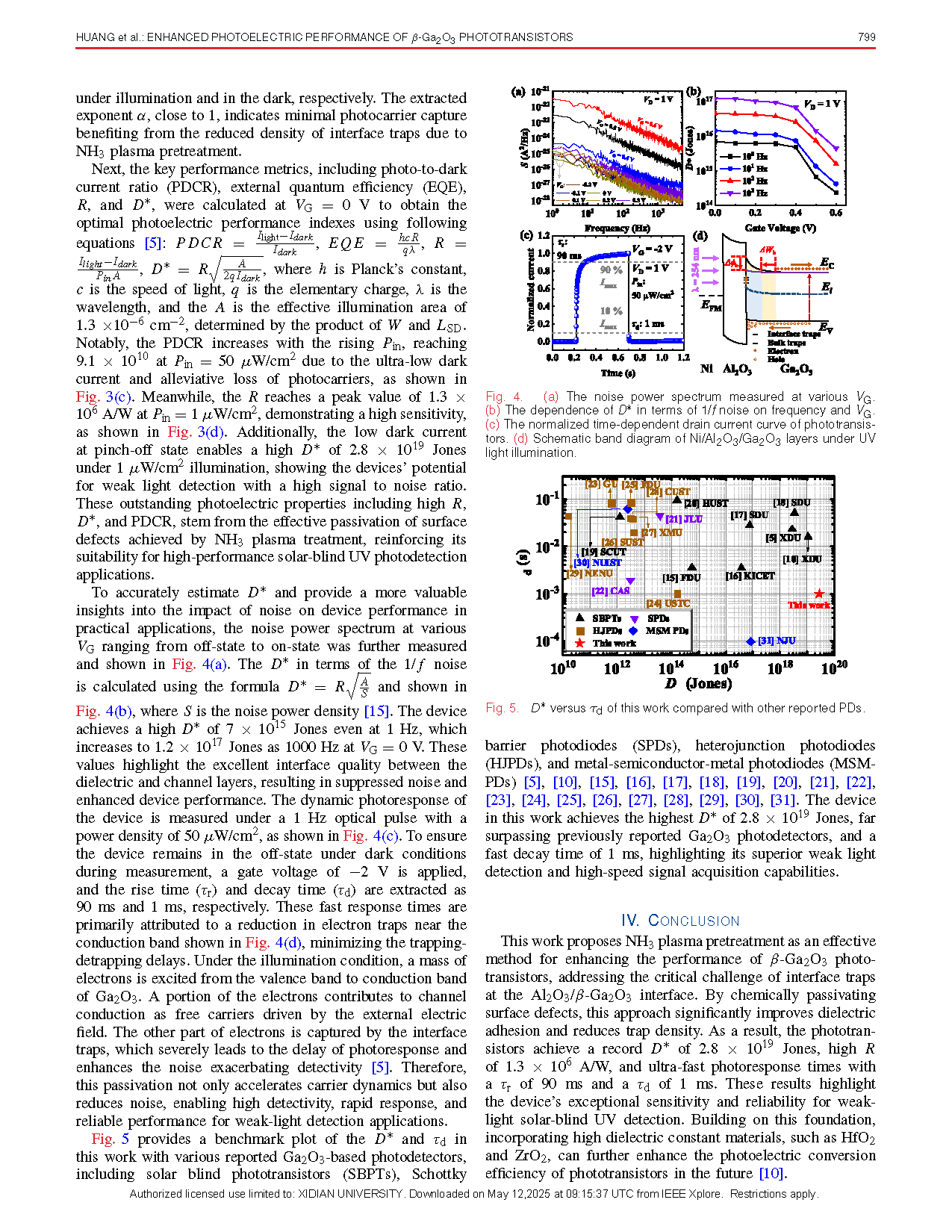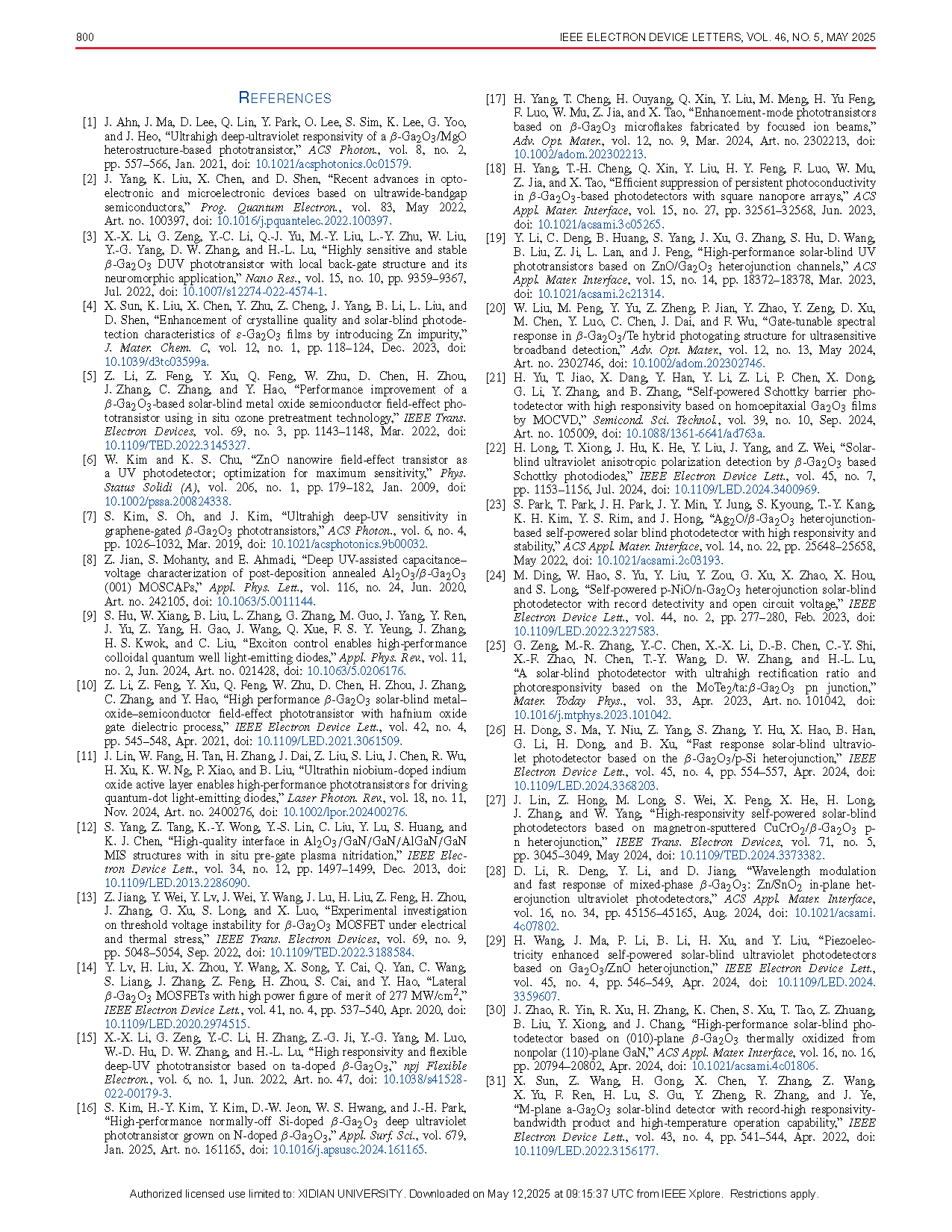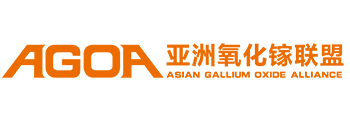

【Member Papers】Xidian University --- Enhanced Photoelectric Performance of β-Ga₂O₃ Phototransistors via NH₃ Plasma Pretreatment for Ultra-Sensitive Solar-Blind UV Detection
日期:2025-06-18阅读:349
Researchers from the Xidian University have published a dissertation titled "Enhanced Photoelectric Performance of β-Ga2O3 Phototransistors via NH3 Plasma Pretreatment for Ultra-Sensitive Solar-Blind UV Detection" in IEEE Electron Device Letters.
Introduction
β-Ga2O3 has emerged as a promising candidate for solar-blind photodetectors due to its wide bandgap of 4.6-4.9 eV and high chemical stability. These advantages have driven researchers to explore various device architectures, including photodiodes and phototransistors, to meet the growing demand for high-performance solar-blind photodetectors. Contrast to photodiodes, phototransistors is particularly advantageous for weak-light detection due to their gate-controlled capacity. However, the performance of phototransistors such as dynamic response and photoelectric properties are often hindered severely by traps positioned at the dielectric/channel interface. Addressing this challenge has become a key focus in the development of high-performance phototransistors.
Abstract
This work presents β-Ga2O3 phototransistors with exceptional photoelectric performance, enhanced by NH3 plasma pretreatment prior to Al2O3 dielectric deposition. The devices achieve a remarkable responsivity (R) of 1.3×106 A/W and a record-high detectivity (D*) of 2.8×1019 Jones under 254 nm ultraviolet (UV) light. Rapid photoresponse is demonstrated, with a rise time (τr) of 90 ms and a decay time (τd) of 1 ms under a 1 Hz pulsed UV light source. These superior characteristics are attributed to NH3 plasma-induced improvements at the Al2O3/β-Ga2O3 interface, including reduced trap density and enhanced dielectric adhesion. The findings provide a promising pathway to advance β-Ga2O3 phototransistors for ultra-sensitive, solar-blind UV detection with rapid response capabilities.
Conclusion
This work proposes NH3 plasma pretreatment as an effective method for enhancing the performance of β-Ga2O3 phototransistors, addressing the critical challenge of interface traps at the Al2O3/β-Ga2O3 interface. By chemically passivating surface defects, this approach significantly improves dielectric adhesion and reduces trap density. As a result, the phototransistors achieve a record D∗ of 2.8 × 1019 Jones, high R of 1.3 × 106 A/W, and ultra-fast photoresponse times with a τr of 90 ms and a τd of 1 ms. These results highlight the device’s exceptional sensitivity and reliability for weak-light solar-blind UV detection. Building on this foundation, incorporating high dielectric constant materials, such as HfO2 and ZrO2, can further enhance the photoelectric conversion efficiency of phototransistors in the future.
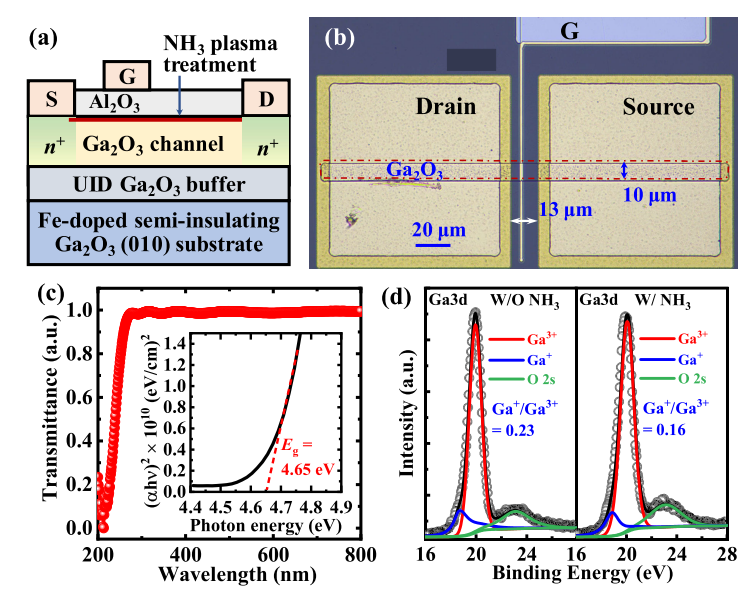
Fig. 1. (a) Schematic and (b) optical microscope images of the β-Ga2O3 solar-blind phototransistors. (c) Transmittance spectrum of the β-Ga2O3 epitaxial film. (d) XPS spectra of Ga 3d core-level for Al2O3/β-Ga2O3 samples, with and without NH3 plasma pretreatment.
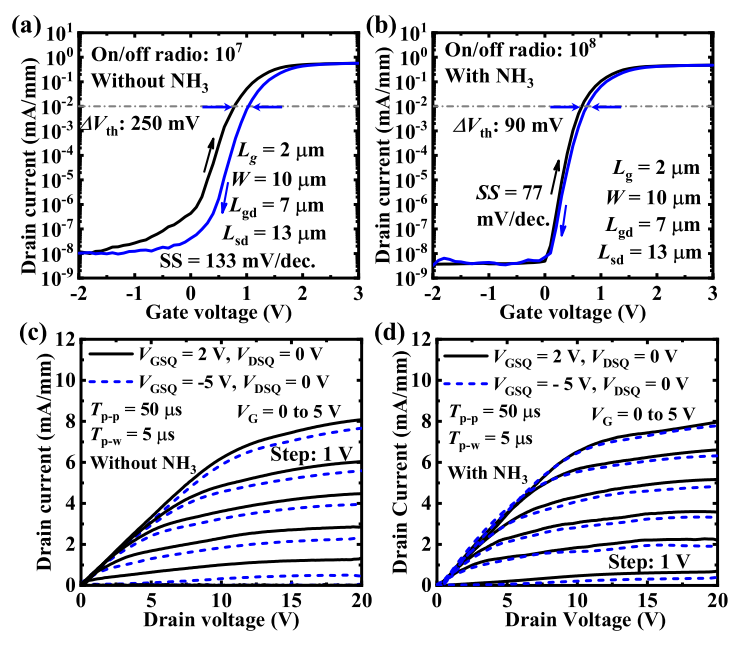
Fig. 2. The dual-sweep transfer curves of the phototransistors (a) without and (b) with NH3 treatment. (c) The comparison of pulse output curves of the phototransistors (c) without and (d) with NH3 treatment measured at two quiescent biases.
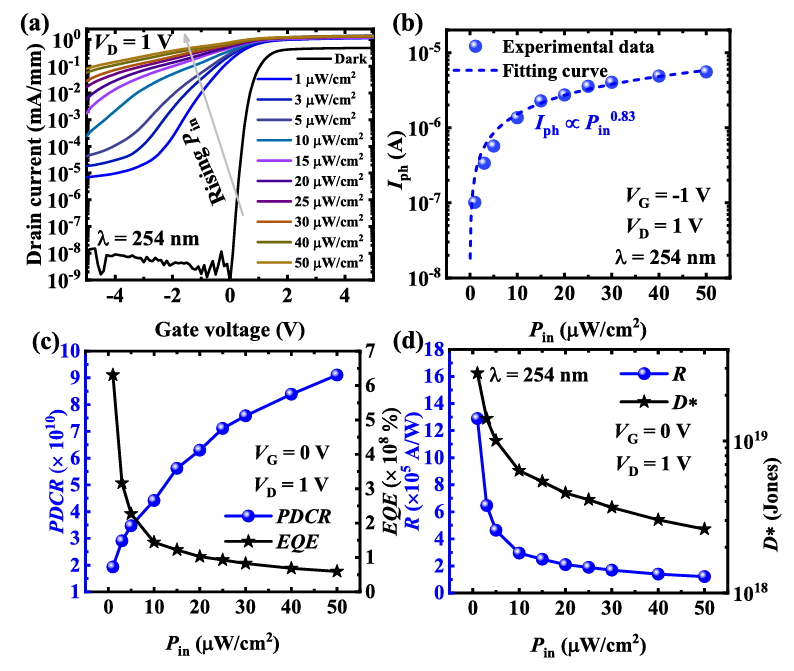
Fig. 3. (a) Transfer characteristics of the phototransistor under illu mination of 254 nm with various light intensities. The dependences of (b) Iph (c) PDCR and EQE (d) R and D* on the light power density.
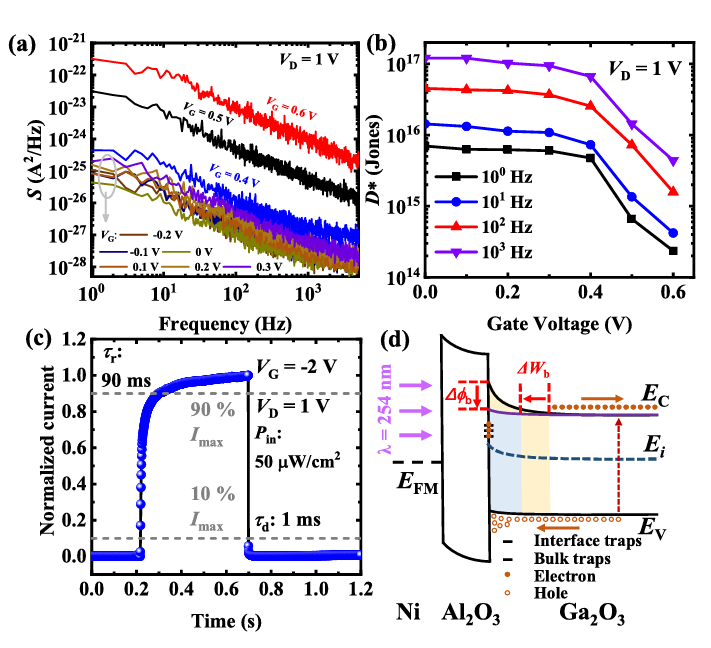
Fig. 4. (a) The noise power spectrum measured at various VG. (b) The dependence of D* in terms of 1/f noise on frequency and VG. (c) The normalized time-dependent drain current curve of phototransistors. (d) Schematic band diagram of Ni/Al2O3/Ga2O3 layers under UV light illumination.
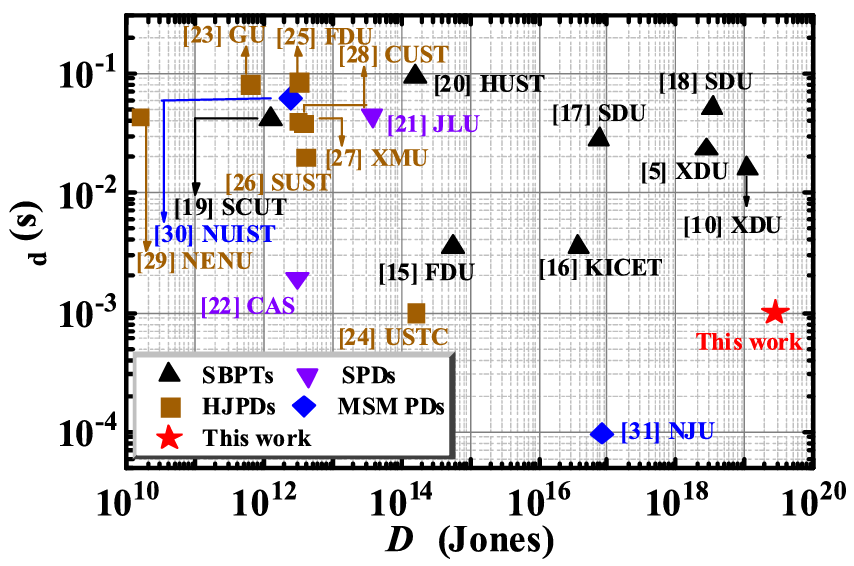
Fig. 5. D* versus τd of this work compared with other reported PDs.
DOI:
doi.org/10.1109/LED.2025.3545485
